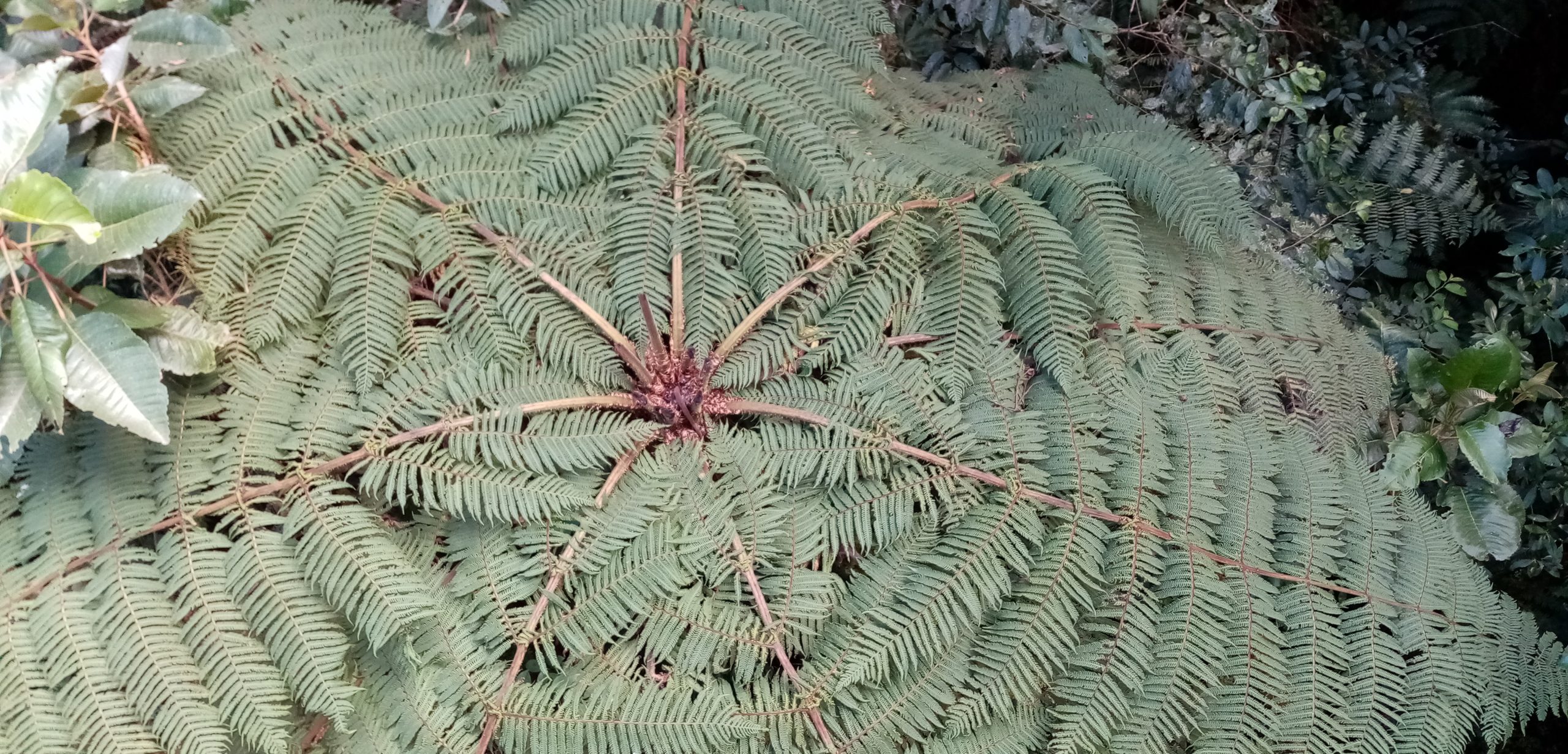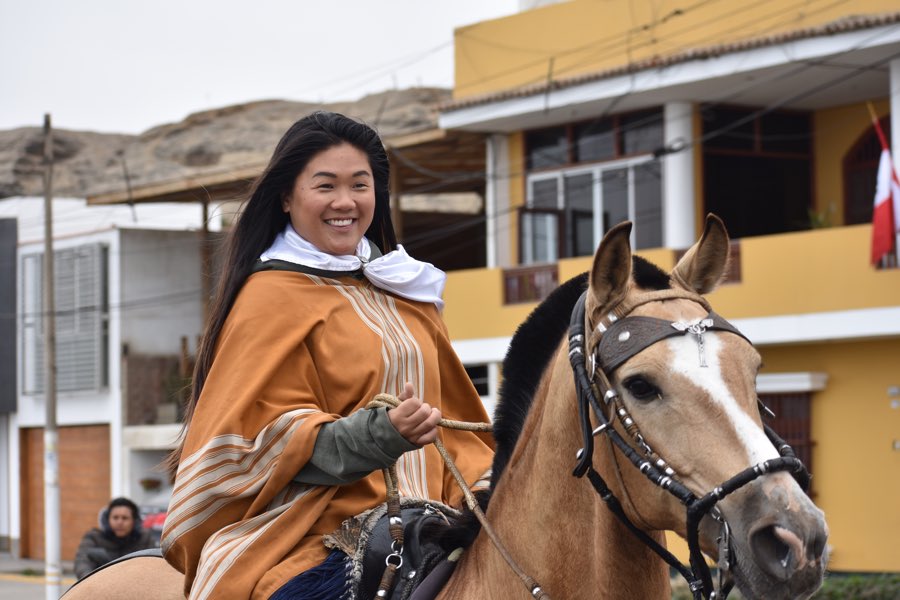Oxapampa and Pozuzo are generally known for the Austro-German traditions of the region. I will discuss this further in this article, but it seems very limiting to me to only focus on the immigration history of this beautiful region. Because there is much more to discover! If you love nature, waterfalls, and hiking, Oxapampa is the place for you! It has a Costa Rican vibe.
Here are some ideas for visits and excursions that I have personally tested:
Nature and Biodiversity
Oxapampa is located at an altitude of 1,800 meters, making it a paradise for nature lovers, birdwatchers, and hikers.
There are plenty of walks to do in the area, whether it’s exploring hiking trails in the Yanachaga-Chemillén National Park, observing diverse wildlife and flora, or cooling off in a waterfall or lake.
Waterfalls
Cascada Anana (or Catarata Anana) is one of the magnificent waterfalls located about an hour from Oxapampa. It’s a tranquil, well-maintained place, perfect for a relaxing afternoon after a morning hike.
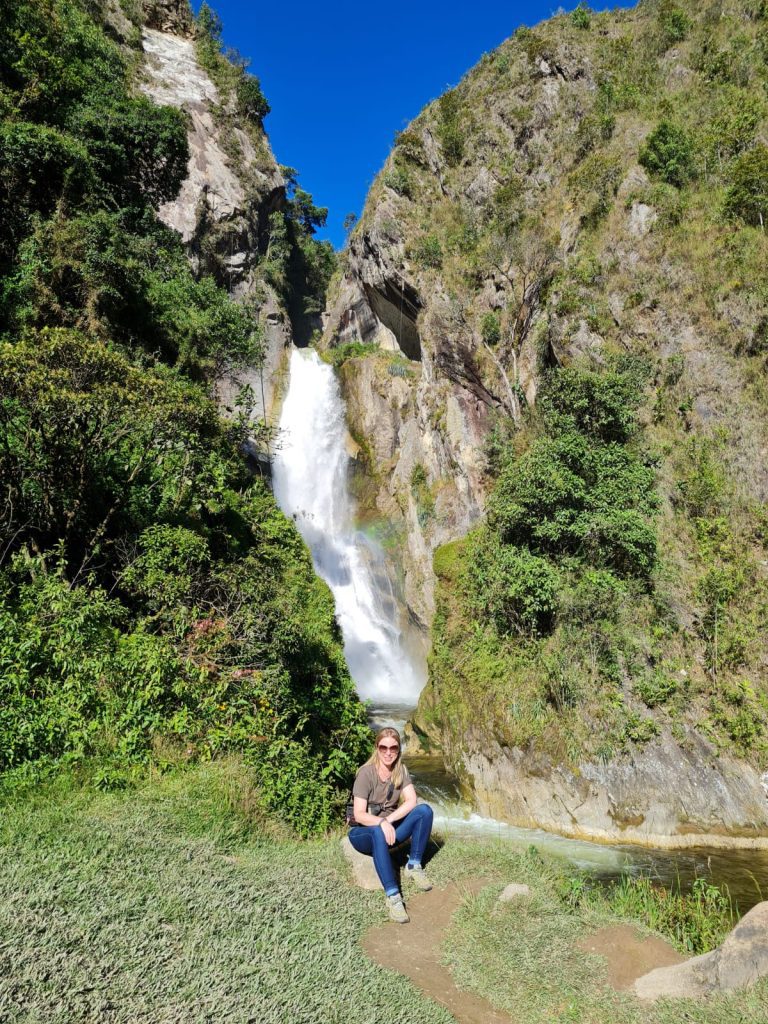
Another well-known waterfall in the region is the Rio Tigre waterfall, about 10 kilometers from Oxapampa. It’s located near the village of Huancabamba. To access it, you’ll need to take a short hike through pineapple fields, granadilla orchards, and lush forests. The Rio Tigre waterfall is famous for its crystal-clear waters that form a natural pool below. You can refresh yourself by taking a swim in its clear waters before starting the return hike.
Another nature outing is visiting a Private Conservation Area (ACP), of which there are many in Peru, under the guidance of the Conservamos por Naturaleza association.
ACP Bosque de Churumazu
I had the opportunity to spend half a day with Eduardo from ACP Bosque de Churumazu, located 20 minutes from Oxapampa. Eduardo first came to Oxapampa in 2012, where he met another Eduardo from Ulcumano (see below), who inspired him to embark on a personal journey of environmental protection and reforestation. He purchased his land in Oxapampa in 2014 and visited other Private Conservation Areas (ACP) in northern Peru, including our friend Perico from ACP Milpuj in the Amazonas region, to learn from other reforestation examples and gain insights from their experiences.
Today, in the Oxapampa region, there are 14 partners in the network of voluntary conservators (red de conservacion voluntario). Eduardo’s initial task was to structure his project in order to preserve the space and biodiversity on his land. He conducted an inventory of endemic and endangered species on his property to protect the habitat these species rely on. The local birdwatching club identified 191 bird species, including 6 endemic ones. He then began the process of transforming the grazing land or agricultural field into forest restoration. This involves assisting the forest in naturally regenerating itself, which includes technical support for tree planting.
Conservation
The importance is to preserve or recreate the forest that manages the natural water cycle of the region. Nature (birds and animals) can regenerate very well if given the space and time.
As the land recovers, Eduardo has also started sharing his knowledge with schools and universities in the region through on-site educational activities. They also work on eco-friendly projects like organic gardening, solar panels, or a soil quality study.
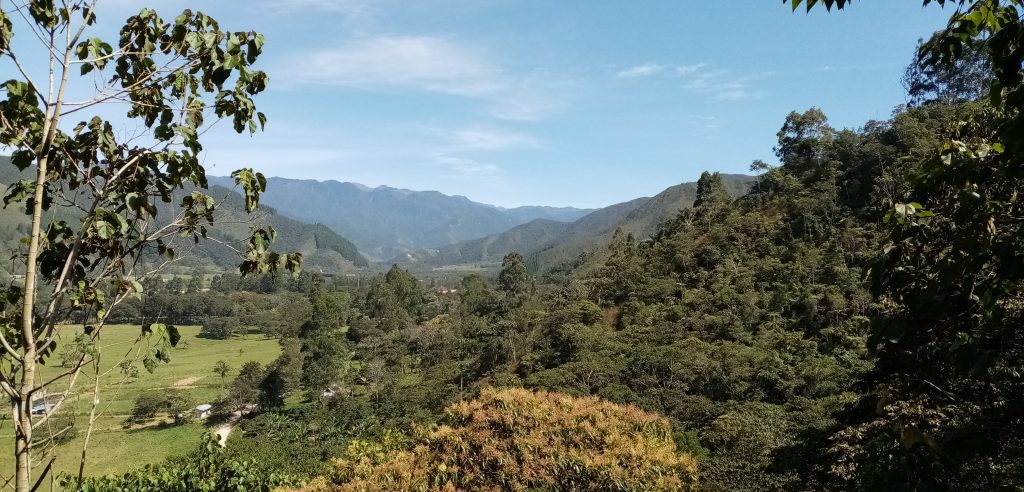
He also receives visitors to show them the work done at the Bosque de Churumazu ACP, raise awareness, educate them, and “change the chip,” as he puts it. Several visitors have started their own initiatives after meeting Eduardo.
Today, Eduardo offers various activities at Churumazo that also help support the ACP and generate revenue: birdwatching, guided hikes on the property with explanations and information about the conservation efforts, accommodation in one of the two cabins, research projects, and self-sustaining agricultural products sold in the market.
Adventure and Outdoor Activities
Oxapampa offers a range of outdoor activities, including hiking, birdwatching, rafting, and horseback riding. It’s an ideal place for adventure sports enthusiasts.
I had the opportunity to visit Eduardo from the Ulcumano Ecolodge, an environmentally friendly lodge designed to offer an accommodation experience in harmony with the lush nature of the region. Ulcumano is also part of Conservamos por Naturaleza.
To get there, you’ll need about 30 minutes in a 4×4 vehicle because the road is steep and mostly a dirt track. We pass through coffee plantations, virgin forests, and huge ferns – truly lush vegetation.
L’Ulcumano Ecolodge
Ulcumano is located at an altitude of 2,200 meters on an area of 102 hectares. It emphasizes sustainability and environmental preservation. It’s built with eco-friendly materials.
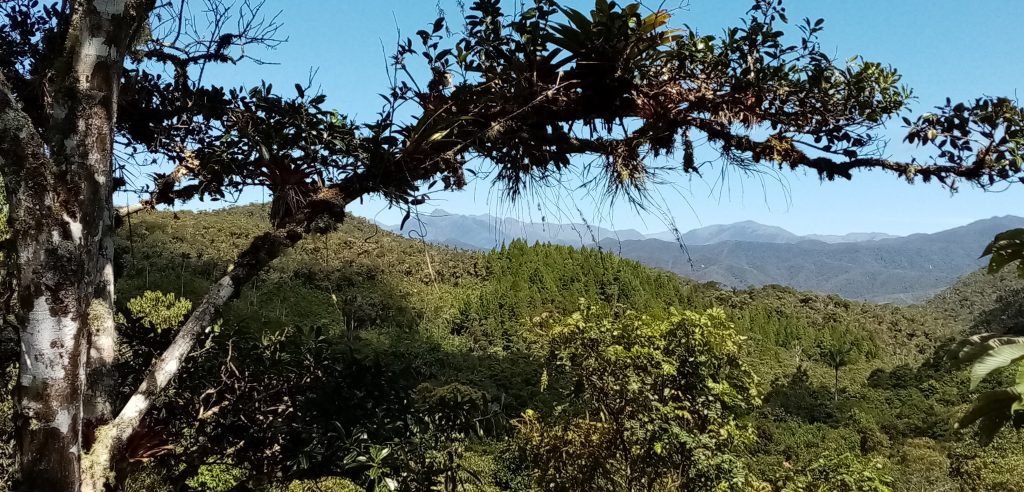
Eduardo started in 2008, and he now has eight cabins for 2 to 4 people. The lodge also offers a communal dining room, relaxation areas, and a barbecue grill. If you stay there, Eduardo’s wife takes care of the cooking using local products.
Eduardo first presents his concept in the Interpretation Center, very well done. Then he takes us on a tour of the property with the dining room and the cabins. The cabins are all hidden in nature, with no neighbors, and offer all the comforts.
Ulcumano offers various outdoor activities such as guided forest hikes, birdwatching, excursions to discover local flora and fauna. For the more adventurous, there’s the choice between ziplining, rock climbing, or a canopy walk.
Canopy Walk
Exactly, that’s what we’re going to do, the canopy walk! Eduardo shows us how to put on the harnesses. We start with a 10-minute walk to the start of the course. We climb the tower, which is 12 meters high. It’s incredible how the view is different from the platform. From here, you have a view of the trees or the treetops.
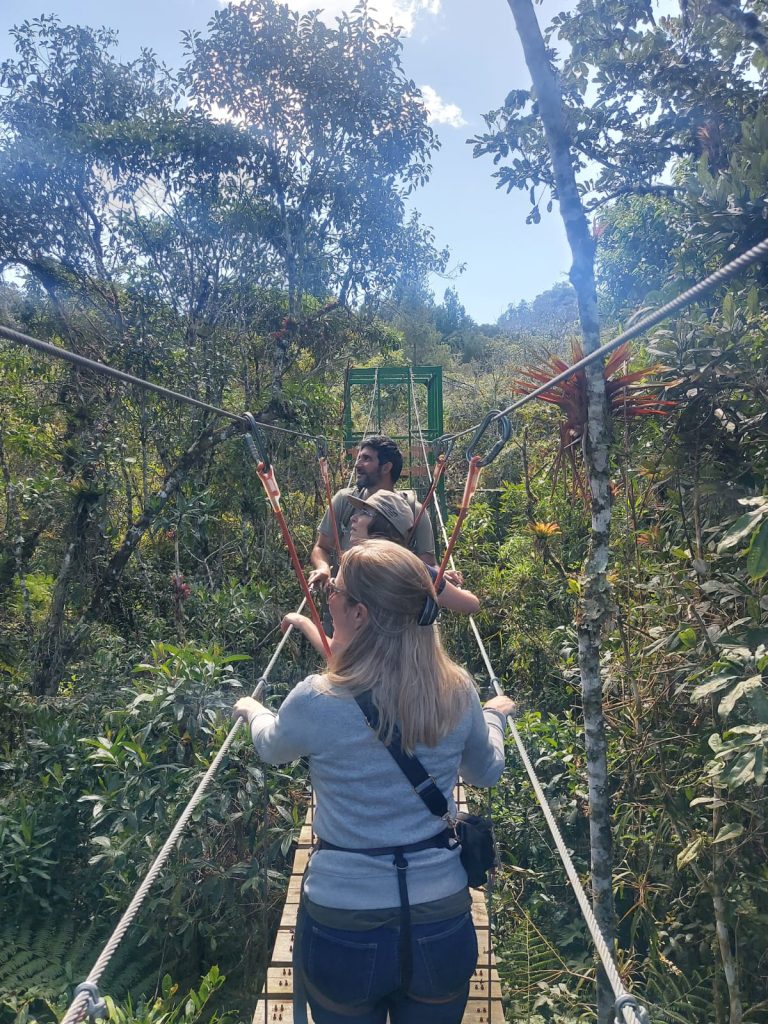
During our tree walk, we’re lucky. We see trogons and a group of various types of tanagers, blue, yellow, and red-headed. It’s a magnificent sight!
If you’re looking for a nature experience, Ulcumano Ecolodge in Oxapampa is an adventure that the whole family will enjoy.
Culture and Traditions
Oxapampa is a unique blend of cultures, especially Tyrolean and Peruvian influences. The city center is full of charming Tyrolean-style wooden houses.
Pozuzo
Pozuzo is about a 2-hour drive from Oxapampa. We spent a night there to have more time on site.
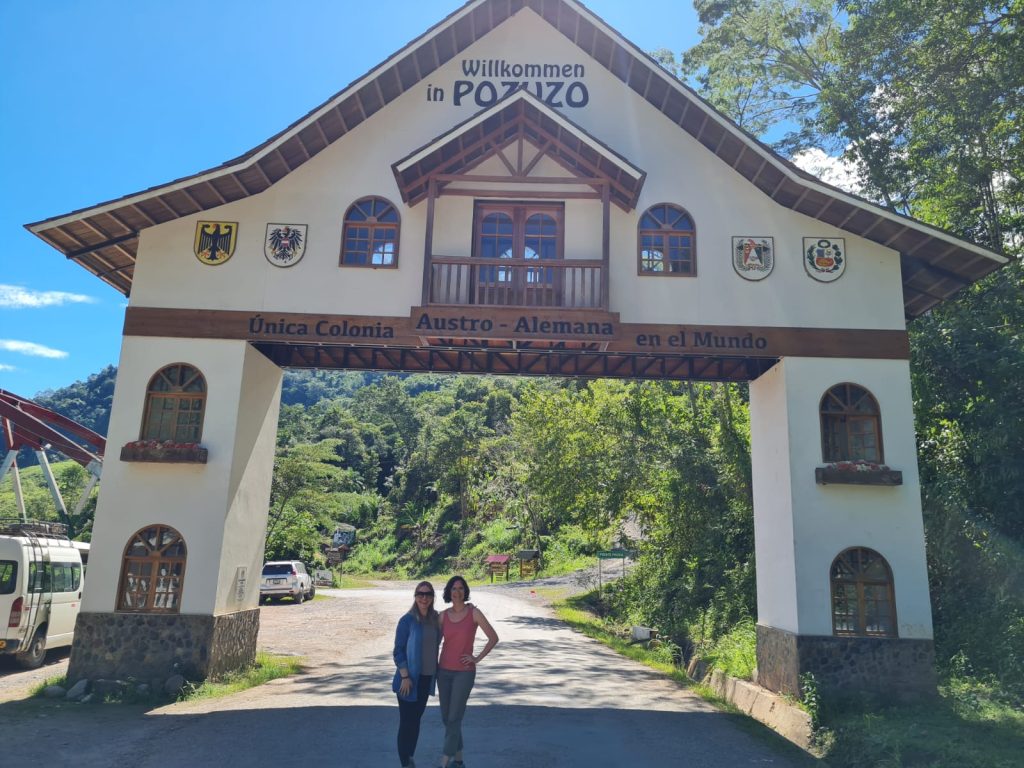
A Bit of History
The history of Pozuzo dates back to the 19th century and is linked to Austro-German colonization in Peru. In 1859, a group of German settlers led by a Catholic priest, Father José Egg, arrived in the central region of Peru in search of a place to settle. They were mainly from the Carinthia region in Germany and the Tyrol region in Austria. The settlers were looking for a place to practice their Catholic faith in a more favorable environment.
They eventually chose the Pozuzo valley as their new homeland. The region was isolated and difficult to access at the time. This allowed them to live independently and preserve their culture and traditions. They began to cultivate the land and establish a prosperous agricultural community.
However, life in the Pozuzo valley was not without challenges. The settlers had to deal with difficult conditions, including the humid tropical climate, diseases, and occasional conflicts with local indigenous populations.
Despite the difficulties, the Pozuzo settlers managed to preserve their German culture and traditions. They built Tyrolean-style wooden houses and maintained their language, customs, and traditional cuisine. I am amazed at how they have maintained these traditions for several hundred years. (Being German myself, living in France for 30 years, I have not been able to maintain traditions with my own children.)
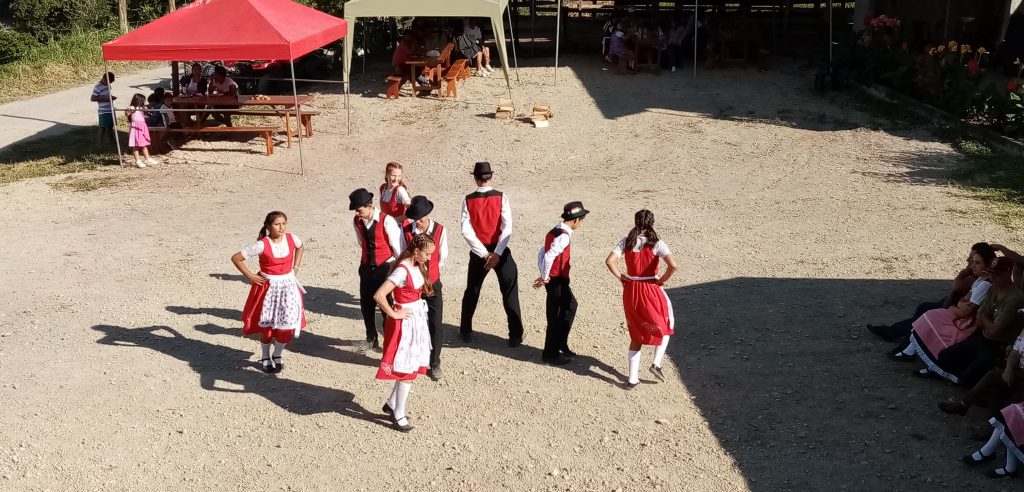
Living Traditions
Over time, Pozuzo has developed and opened up to tourism. Today, the region attracts visitors from Peru and beyond. They come to discover its rich cultural heritage and natural beauty.
Pozuzo is a unique place where you can still see German-style houses, taste traditional German food (while listening to Bavarian music), and participate in local festivities that reflect this unique cultural blend.
But apart from its Austro-German origin, Pozuzo is also very interesting for nature and hiking enthusiasts.
Visits Around Pozuzo
Trama
Trama is a 45-minute drive from Pozuzo. After crossing a suspension bridge, it’s about a 30-minute ascent. We arrive in the afternoon; the path is shaded, and it’s quite pleasant to hike.
Trama is a high plateau with a superb view of the valley at an altitude of 1,200 meters. The attraction of Trama is the photo of yourself over the void (with a photo to prove it). When you’re on the cliff, you don’t really realize it. I didn’t get too close to the edges, it’s entirely doable, but from a distance, it’s rather impressive.
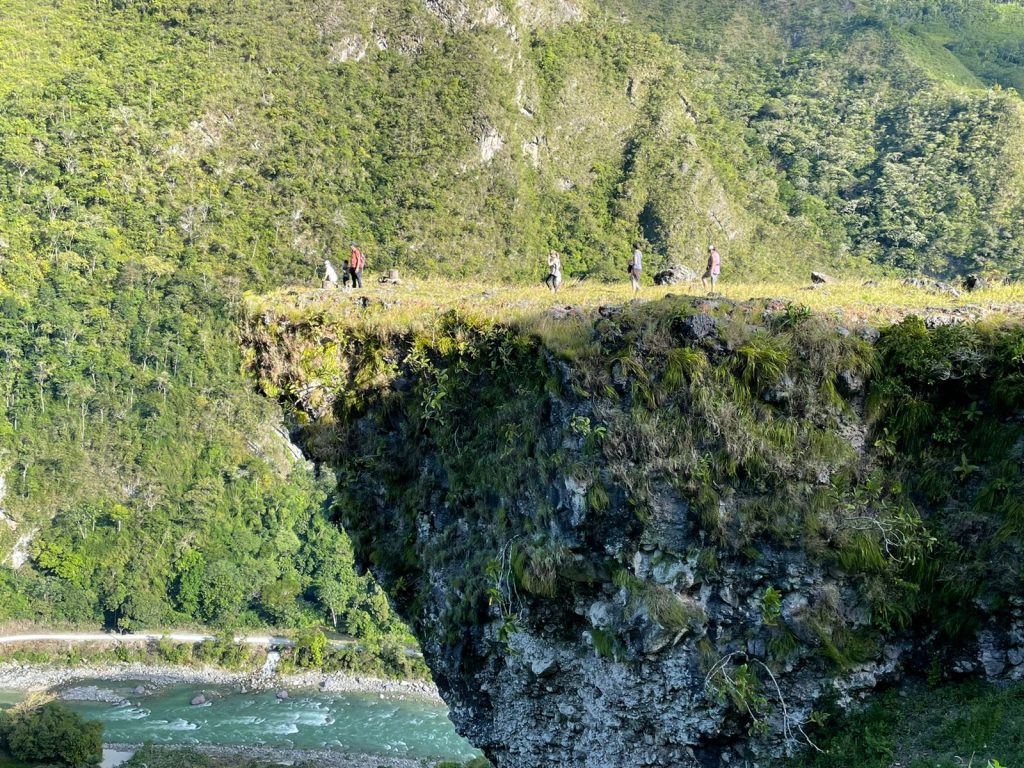
Agua y Sal
The Agua y Sal site is about 30 minutes from Pozuzo. It’s a river on the mountainside that can have crystal-clear and sky-blue colors depending on the time of day. It’s beautiful! The site is easy to access, and there are small straw umbrellas with benches underneath for resting. It’s quite touristy; you can even rent a swimsuit if you forgot yours.
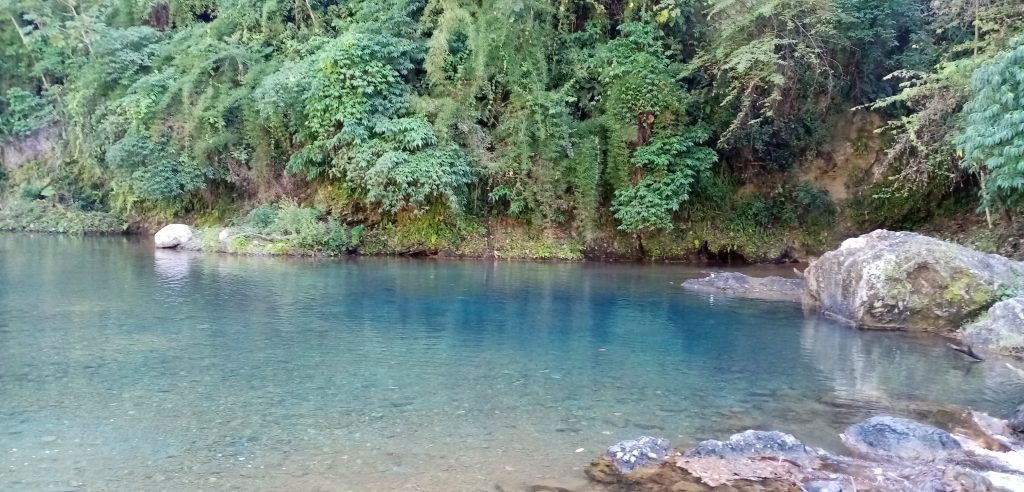
Pozuzo Museum
Of course, as a German, a visit to the Pozuzo Museum is a must. There are two different museums in Pozuzo; I visited the Museo Cultural de Pozuzo. A lady who could be German (but is Pozuzina) gives an explanation in the main room, and then you can visit freely.
This cultural museum highlights the history of the German colony and colonization in Pozuzo. It provides information about the arrival of the German settlers, their traditions, customs, distinctive architecture, and their influence on the region’s development. The museum also presents historical and cultural objects related to Pozuzo’s history. It’s a great place to learn more about the rich cultural heritage of the community.
It’s moving to see the objects from that time and imagine all the efforts they made.
Gastronomy
The Oxapampa region offers delicious and diverse cuisine. You can taste traditional local dishes, often based on meat (Gulasch) with German pasta (Spätzle), and even an Apfelstrudel for dessert!

You can also find local beer in Oxapampa and Pozuzo. There are several breweries you can visit and taste different varieties.

As the region is known for its livestock and milk, there are also several milk, yogurt, or cheese producers. I visited the Mosel cheese dairy, where I could see how they prepare their various cheeses and yogurts. They use processes with less than 10% preservatives. It was later, when traveling to Villa Rica and Satipo, that I realized that Mosel products are sold everywhere in these regions!
Proyecto Centro Yanachaga (formerly Prosoya)
A slightly different but very interesting visit is to the Yanachaga Center, formerly known as PROSOYA (Social Program Yanachaga).
The Centro Yanachaga village project is a social project for 60 students from the poorest families in the villages on the edge of the Yanachaga-Chemillen National Park in the Pasco district of the Peruvian mountains. It is funded by the German association Peru-Aktion e.V. through donations.
The center consists of a church, several housing units, woodworking and other craft workshops, a garden, a fish hatchery, and beekeeping facilities. All on a 700-hectare property.
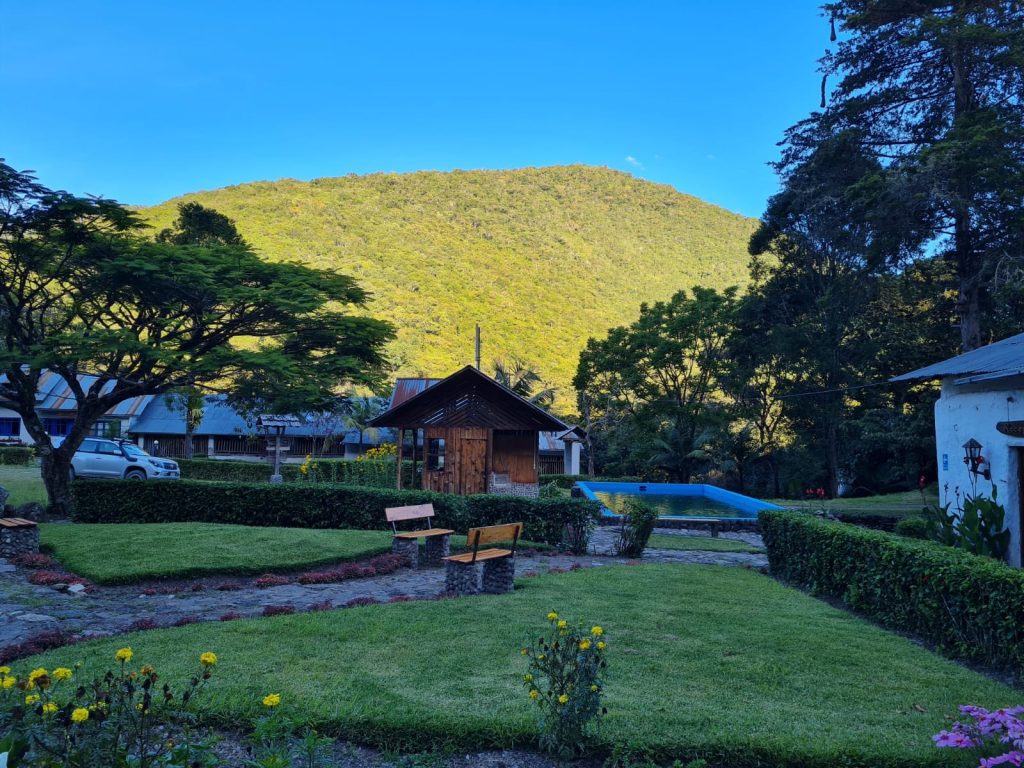
The History of Prosoya
The initial buildings were constructed and managed in 1875 by the family of Enrique Böttger, one of the co-founders of Oxapampa, a family of German immigrants. During that time, they engaged in extensive agricultural product exchanges (as well as liquors and beers) with the surrounding regions.
In 1943, with the construction of the road, the hacienda became less profitable and was put up for sale. In 1970, it was purchased by the Müller family, who specialized in cattle farming until Mr. Müller’s passing. From that point on, the property was more or less abandoned.
The Peru-Aktion organization, dedicated to providing education and vocational training to underprivileged children, was in search of a location to establish their center. They acquired the property in 1987 and began the process of rebuilding the abandoned buildings.
Current organisation
In the various housing buildings, each group of children (according to their age) lives with a mentor who takes care of them during their time at Prosoya. They help them get ready for school, shower, dress, do their homework, etc. The young people come from resource-poor families in the surrounding area.
At Prosoya, they go to school, and from the age of 12, they also participate in workshops such as carpentry, mechanics, beekeeping, hospitality, or catering. After completing the 5th year of secondary school, at the age of 16 or 17, they choose what they like best to start real vocational training.
Funding
For now, the center is not self-sufficient. They receive 60% of subsidies from the state and donations from Peru-Aktion. Schools provide school supplies, and individuals “adopt” a student to support them monthly. Agricultural and beekeeping production generates revenue, as well as on-site hospitality.
A visit to Prosoya will show you all the efforts made by educators, but also by donors and the Peruvian government to provide opportunities for underprivileged youth in the region.
Conclusion
In summary, traveling to Oxapampa is an opportunity to connect with nature and experience memorable adventures. Whether you are interested in biodiversity, culture, cuisine, or outdoor activities, Oxapampa has something to offer all travelers eager for discovery. In my opinion, the region is currently underrated, which is why I want to highlight it more!
How to Get to Oxapampa
Unfortunately, there is no airport in Oxapampa. The only options to reach the region are:
- By bus: Reliable bus companies like Movilbus offer trips to Oxapampa. Expect about 10 hours of travel.
- By car (either rental or with a private driver). The road is scenic, offering panoramic views of the mountains and the Amazon rainforest, but some parts can be winding and in poor condition, so make sure you are prepared.
Where to Stay in Oxapampa
There are several options that I have already mentioned in this article, but here is a brief summary.
In the city center: Carolina Egg Gasthaus, near the city center. Bungalows in a beautiful garden, this hotel is a classic in Oxapampa.
In the surroundings:
- Ulcumano Ecolodge, in Eduardo’s house – more details see above.
- ACP Bosque de Churumazu, in the other Eduardo’s house – more details see above.
- Refugio El Bosque / Oxacamp, with Eduardo and Rocio – design cabins with a view of the valley, tranquility guaranteed.
- Los Altares de Oxapampa – a large complex on the heights of Oxapampa.


